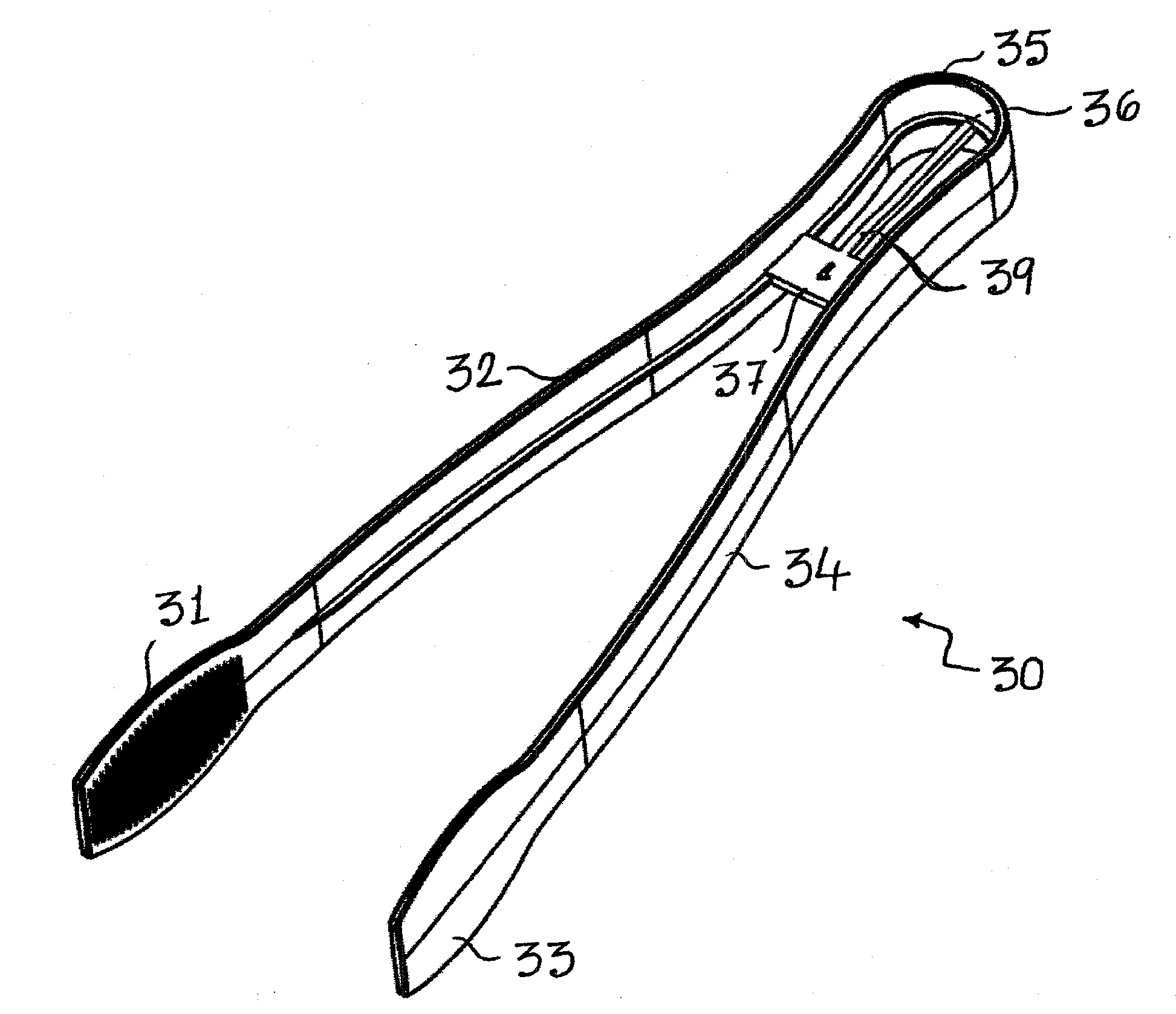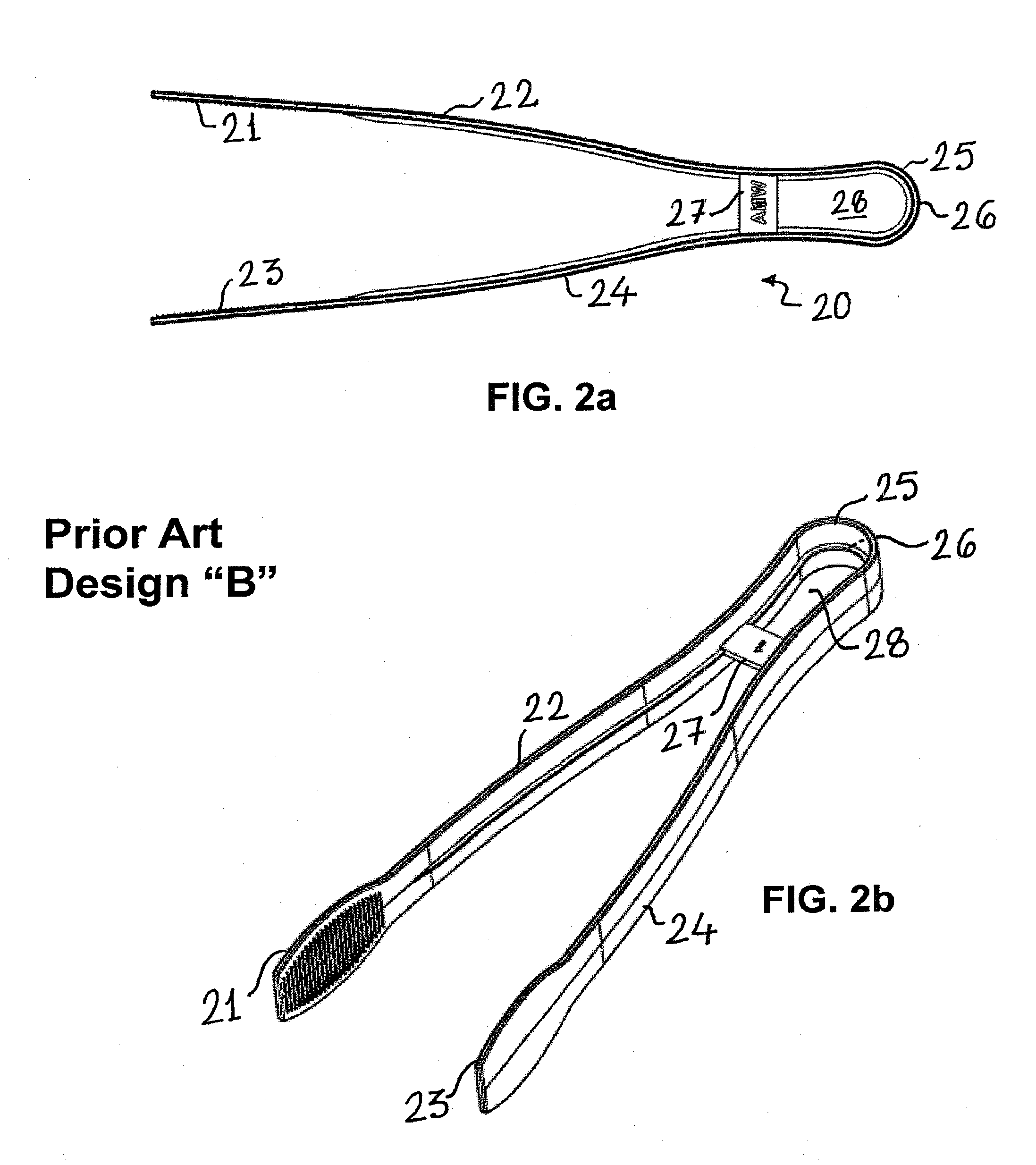Food service tongs and mold therefor
a technology of plastic tongs and food service, applied in the field of tongs, can solve the problems of tongs that are susceptible to breakage in the area, tend to fail in the fulcrum region or around the gate area, so as to improve strength and resistance to breakage
- Summary
- Abstract
- Description
- Claims
- Application Information
AI Technical Summary
Benefits of technology
Problems solved by technology
Method used
Image
Examples
Embodiment Construction
[0047]The following description of the exemplary embodiment(s) of the invention has been presented—by way of illustration and to facilitate an understanding of the invention by one of ordinary skill. The description and accompanying figures are not meant to be exhaustive and accordingly many modifications and variations are possible in the light of the disclosure. It is not intended to limit the scope of the invention in any way. Furthermore, the features and advantages described herein are not all-inclusive and, in particular, many additional features and advantages will be apparent to one of ordinary skill in the art in view of the drawings, specification, and examples of claims. As will also be realized, the invention is capable of other and different embodiments, and its several details are capable of modifications in various respects without departing from the spirit and scope of the invention. Also, it will be appreciated that the reference numbers used with respect to specifi...
PUM
| Property | Measurement | Unit |
|---|---|---|
| length | aaaaa | aaaaa |
| thickness | aaaaa | aaaaa |
| flexibility | aaaaa | aaaaa |
Abstract
Description
Claims
Application Information
 Login to View More
Login to View More - R&D
- Intellectual Property
- Life Sciences
- Materials
- Tech Scout
- Unparalleled Data Quality
- Higher Quality Content
- 60% Fewer Hallucinations
Browse by: Latest US Patents, China's latest patents, Technical Efficacy Thesaurus, Application Domain, Technology Topic, Popular Technical Reports.
© 2025 PatSnap. All rights reserved.Legal|Privacy policy|Modern Slavery Act Transparency Statement|Sitemap|About US| Contact US: help@patsnap.com



